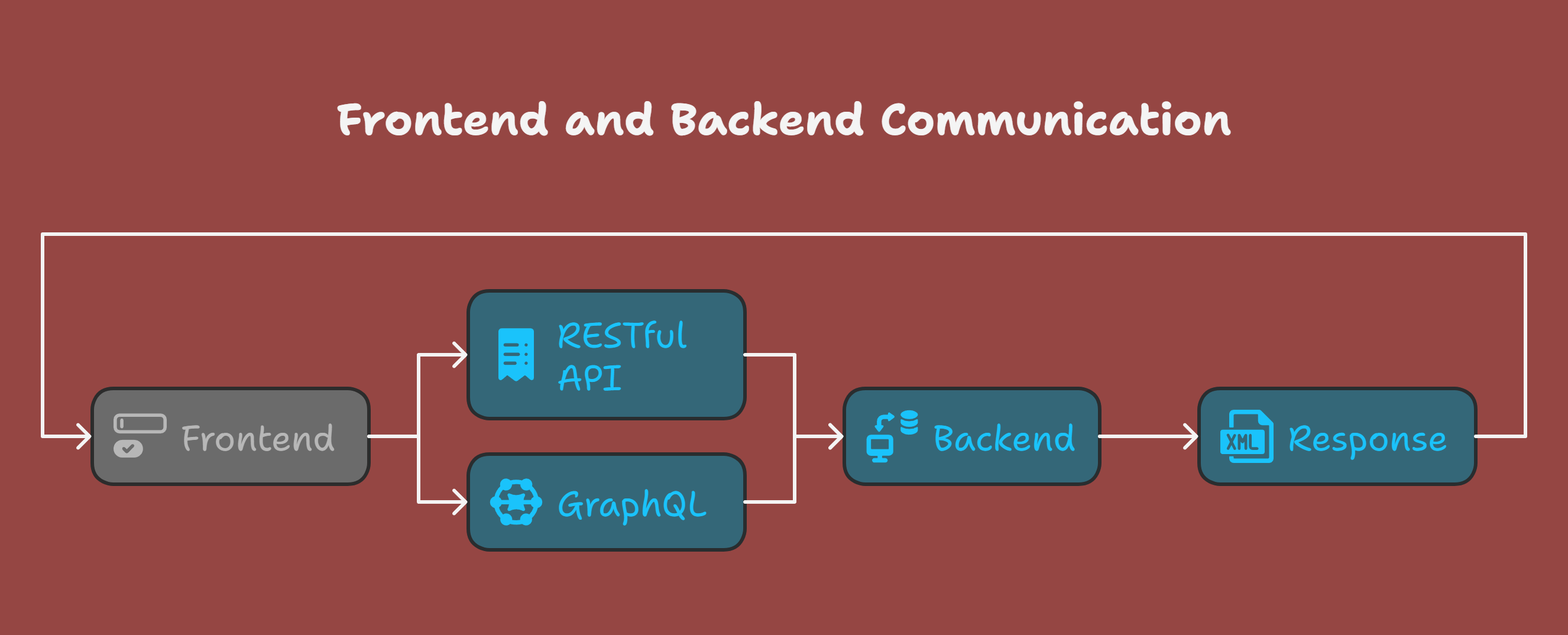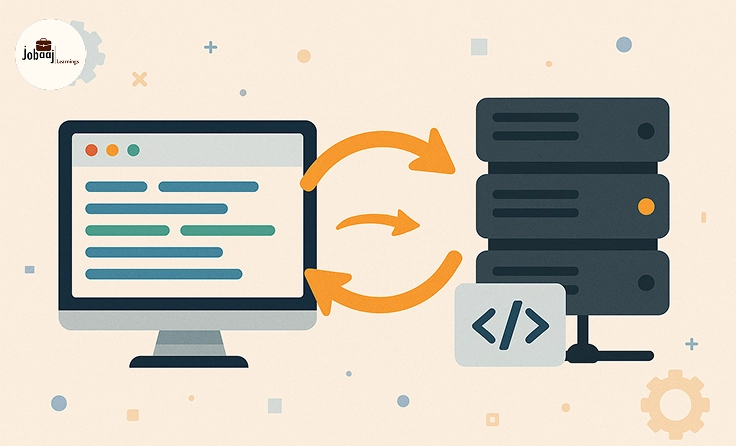Ever wondered how the magic happens when you click a button on a website? It's like a secret handshake between the front and the back. This guide pulls back the curtain on that interaction, explaining how the frontend (what you see) talks to the backend (the behind-the-scenes engine).
We'll break it down simply, even if you're just starting out. From basic connections to complex setups, you'll get a clear picture of the whole process.
Exploring a career in Full Stack Development? Apply now!
Understanding the Basics
Imagine a restaurant. The dining room, where you order food, is the frontend. The kitchen, where the food is prepared, is the backend.
Your order (a click, a form submission) goes from the frontend to the backend. The backend processes it (fetches data, performs calculations) and sends back the result (your meal, the updated webpage).
This communication happens through APIs, which are like messengers between the two.
Making the Connection
One common way frontends and backends talk is with RESTful APIs. Think of these as standardized order slips.
Your frontend sends a request (GET, POST, PUT, DELETE – like ordering, adding, changing, or removing a dish). The backend receives the request, performs the action, and sends back a response (usually in JSON or XML format).
Let's say you're building a blog. When a user clicks on a blog post, the frontend sends a GET request to the backend. The backend fetches the post's content from a database and sends it back to the frontend to be displayed.
Another popular way to communicate is through GraphQL, which lets the frontend request specific data, improving efficiency. It's like ordering only the ingredients you want for your perfect dish.

Advanced Techniques
As websites get more complex, so do the backend and frontend integrations. Real-time updates, like in a chat application, are handled with technologies like WebSockets.
WebSockets create a persistent connection, letting the server push updates to the client instantly. It's like having a direct line to the kitchen for constant updates on your order.
Security is crucial. Protecting your API with authentication and authorization keeps unauthorized users out of the kitchen, so to speak. Tools like JWT (JSON Web Tokens) are commonly used for secure communication.
And to manage large amounts of data efficiently, backend developers often use databases like PostgreSQL or MySQL. This is like the restaurant's inventory system—it keeps everything organized and accessible.
Wrapping Up
Integrating your frontend and backend is key for building dynamic and interactive websites. From simple RESTful APIs to powerful WebSockets, the right tools and techniques can bring your web applications to life.
While there’s always more to learn in the ever-evolving world of web development, understanding these core concepts sets a solid foundation for crafting engaging user experiences.
















